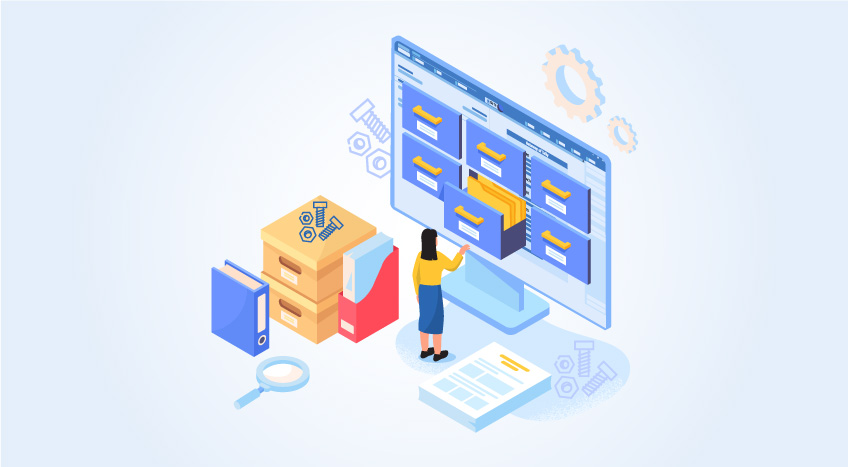Pramit Pratim Ghosh |Updated on: July 20, 2022
In our previous blog, we had discussed about 5 things you need to keep in mind, while deciding when is the right time to automate your business. In case, you have decided to automate your business and therefore become more efficient, you would obviously be eager to understand how to go about it. But before you get into automating your business, we would request you to take a step back, and think about - what to automate - in other words, which are the business processes worth automating.
Broadly speaking, any business, irrespective of segment or size, have primarily 6 business processes:
- Purchase Cycle & Sales Cycle
- Operating Expenses Management
- Receivables and Payables Management
- Cash Flow and Funds Flow
- Inventory Management
- Periodic Statutory Compliance
In our next few blogs, we will try to understand how to become efficient in each of these processes, and how automating them may help you. But before we do that, lets quickly go through each of these 6 business processes, to understand how each of them are linked to your business growth.
Things to Automate - 6 business processes to focus on
The Indian Economy is a growing economy, which has embraced some revolutionary tax reforms last year. In such an environment, it is a given that an SME will have the hunger, ability and agility to grow, more rapidly than larger players. One way to unlock growth, is to remove inefficiencies in the following areas:
Purchase Cycle & Sales Cycle
The Purchase Cycle is the process of how you obtain and manage goods and services for your business. In case you are a manufacturer, it will be about procuring raw materials needed for manufacturing a product; in case you are a trader, it will be about obtaining goods for trade; in case you are a service provider, it will be about obtaining materials required to provide a service. It starts from placing a purchase order with your supplier and ends with you making the payment for the same, after the order is fulfilled.
On the other hand, the Sales Cycle is the financial life blood for your organization. It basically determines how quickly an invoice or an order from a customer is translated into cash in your bank. In addition, it also determines the experience, perception and value add of the goods or service you are offering to your customer.
Operating Expenses
There are several expenses, you must be managing, while carrying out the day to day activities of your business. All these activities are not directly related with your core business activity, say – manufacturing, trading or services – but are crucial to keep your business running, and thus are classified as operating expenses. Popular examples of operating expenses include payroll, sales commissions, employee benefits, conveyance, amortization, depreciation, rent, repairs etc.
Receivables and Payables Management
Keeping track of your business outstandings, is extremely critical, as it impacts your cash flows. On one hand are your receivables – wherein you are expected to extend credits to your customers to maintain good business relationships; on the other hand, are your payables – wherein you are expected to pay up in time, in order to maintain your credit worthiness. Both receivables and payables need to be managed intelligently so that you are never in any kind of cash crunch.
Cash & Fund Flow Management
Two quick measures of your business performance are – cash flow & fund flow. Cash Flow is the difference in the amount of cash available at the beginning of a period (basically, your opening balance) and the amount of cash at the end of that period (your closing balance). In case your closing balance is higher than your opening balance, you are said to have a positive cash flow, and if it is the opposite, you are said to have a negative cash flow.
Funds Flow, on the other hand, is a much broader view of your business, as it seeks to analyse the reasons for changes in your financial position. It deals with an increase or decrease in your current assets or current liabilities. In other words, your funds flow statement tallies the funds generated from various sources with various uses to which they are put – which in turn impacts your working capital.
Inventory Management
In case your business deals with inventory, you will surely be concerned about maintaining an optimum amount of stock at all points in time – and that’s where inventory management steps in. The objective of inventory management is to provide uninterrupted production, sales, and / or customer service levels, at the minimum cost possible. This is something, which needs to be closely tracked, as a lack of inventory can lead to lost sales for you, whereas an excess of inventory and increase your costs unnecessarily.
Periodic Statutory Compliance
Last but not the least, complying with GST and other statutory norms is imperative for businesses in India. As you may have surely sensed in the last one and a half years of GST, staying compliant requires valuable work time, resources and continuous monitoring to avoid penalties.
Now that we have spent some time on the 6 main processes of your business, you must be able to see how intricately each of them are linked to your business growth. In fact, there is an opportunity for you to become efficient in each of these business processes – and over our next few blogs, we will try to suggest you some ways in which you can seek the help of technology to unlock further growth for your business.
Latest Blogs

Nuts & Bolts of Tally Filesystem: RangeTree

A Comprehensive Guide to UDYAM Payment Rules

UDYAM MSME Registration: Financial Boon for Small Businesses

Understanding UDYAM Registration: A Comprehensive Guide

MSME Payment Rule Changes from 1st April 2024: A Quick Guide

Are Your Suppliers Registered Under MSME (UDYAM)?

